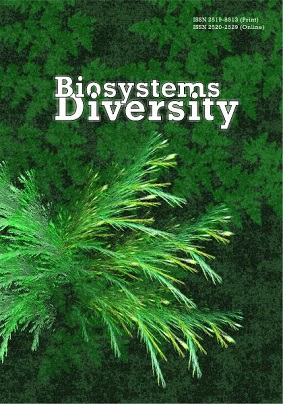Reduction of sulfur and oxidized forms of nitrogen by bacteria of Desulfuromonas sp., isolated from Yavorivske Lake, under the influence of ferrum citrate
Reduction of sulfur and oxidized forms of nitrogen by bacteria of Desulfuromonas sp., isolated from Yavorivske Lake, under the influence of ferrum citrate
Author(s): O. M. Moroz, S. O. Hnatush, O. Maslovska, G. V. Yavorska, B. M. BorsukevychSubject(s): Energy and Environmental Studies, Health and medicine and law, Human Ecology, Environmental interactions
Published by: Дніпропетровський національний університет імені Олеся Гончара
Keywords: sulfur reducing bacteria; electron acceptors; ferrum; sulfur; nitrates; nitrites;
Summary/Abstract: Technogenic reservoirs mainly contain several possible electron acceptors of anaerobic respiration, many of which are dangerous to the environment. The succession of their reduction (and thus detoxification) by sulfur reducing bacteria is not yet sufficiently studied. We investigated the influence of ferrum (III) citrate, present in the cultivation medium, on the reduction of sulfur, nitrate and nitrite ions by sulfur reducing bacteria Desulfuromonas acetoxidans IMV B-7384, Desulfuromonas sp. Yavor-5 and Desulfuromonas sp. Yavor-7, isolated from Yavorivske Lake. It was established that ferrum (III) citrate inhibits the biomass accumulation and hydrogen sulfide production by bacteria of Desulfuromonassp. after simultaneous addition to the medium of 3.47 mM S0 and 1.74– 10.41 mM ferrum (III) citrate, as compared with growth and hydrogen sulfide production by bacteria in the medium with only sulfur. In the medium with the same initial content (3.47 mM) S0 and ferrum (III) citrate bacteria produced ferrum (II) ions at concentrations 3.5–3.9 times higher than that of hydrogen sulfide. Ferrum (III) citrate inhibits the biomass accumulation, the nitrate or nitrite ions reduction and the ammonium ions production by bacteria of Desulfuromonas sp. after simultaneous addition to the medium of 3.47mM NaNO3 or NaNO2 and 1.74–10.41 mM ferrum (III) citrate. In the medium with the same initial content (3.47 mM) NaNO3 and ferrum (III) citrate, bacteria produced ammonium ions at concentrations in 1.1 times higher than that of ferrum (II) ions. In the medium with the same initial content (3.47 mM) NaNO2 and ferrum (III) citrate, bacteria reduced 1.5–1.6 times more ferrum (III) than nitrite ions with production of ferrum (II) ions at concentrations 1.7 times higher than that of ammonium ions. The process of nitrate reduction carried out by bacteria of Desulfuromonas genus was less sensitive to the negative influence of ferrum (III) citrate, compared to the process of nitrite ions reduction. When the reduction of nitrate ions by bacteria in the presence of 1.74–10.41 mM ferrum (III) citrate decreased by 1.4–2.2 times, then the reduction of nitrite ions decreased by 1.8–3.2 times compared to their reduction in media with only NaNO3 or NaNO2, respectively. Although the reduction of ferrum (III) by cells in media with 3.47 mM S0 , NaNO3 or NaNO2 and 1.74–10.41 mM ferrum (III) citrate decreased by 1.6–2.7, 1.6–2.7 and 1.1–2.2 times, respectively, compared to the reduction in medium with only ferrum (III) citrate, the investigated strains of bacteria were resistant to high concentrations of trivalent ferrum compounds and can therefore can be used in technologies of complex purification of environments polluted by heavy metal and nitrogen compounds.
Journal: Biosystems Diversity
- Issue Year: 28/2020
- Issue No: 1
- Page Range: 53-59
- Page Count: 7
- Language: English

